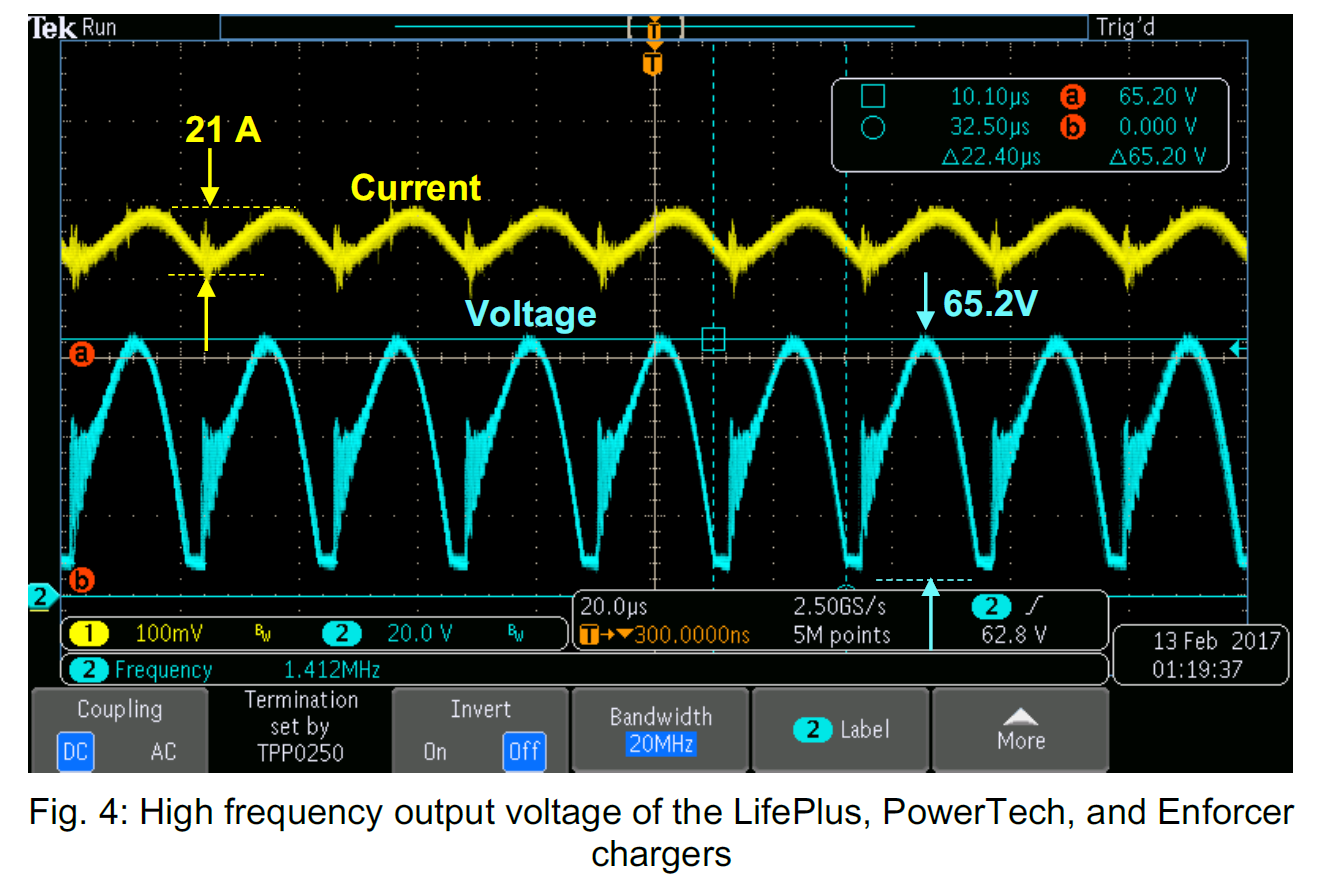Battery charging is a complex electrochemical process, in which the discharged electric energy is replenished from the electric power grid. This is accomplished using a battery charger, which is an electrical/electronic device that converts the incoming AC line voltage into a regulated DC voltage to meet the charging needs of the respective battery. In a series of articles we are going to explain this to you.
Figure 4 shows the actual voltage and current waveforms of an high frequency, high AC ripple resonant charger charging a 36V, 1000 Ahr battery. The captured waveforms show the charger output voltage and output current during the bulk charging phase. The average output current displayed was 117A while the average output voltage displayed was 43.56V (2.42 VPC). However, a closer look at the output voltage shows a very high output AC voltage ripple and AC current ripple. In fact, while the average output voltage displayed by the charger was 43.56V, the peak output voltage of the charger was 65.2V (3.6VPC). In addition, the output current also had a high AC ripple components of more than 20A (20%). These ripple values are quite high and untypical of most high frequency chargers.

There are a number of issues with high frequency / high ripple resonant chargers of this type, including:
• The charger output voltage shows extreme peak voltages in excess of 3.6 VPC. As shown in Fig. 4, the peak charging voltage was 65.2V for a 36V battery during the bulk charging phase (3.6VPC). This high peak voltage causes extra stress to the battery and may interfere with many battery monitoring devices and water level sensing devices, leading to faulty readings.
• The resonant nature of the charger voltage results in a high AC ripple charging current. For the 36V battery waveforms shown in Fig. 4, the charging current has a DC value of 117A with a high frequency AC ripple of more than ~21A (almost 20%). In fact, the current ripple at the start of charge was quite higher (almost 50A or 45%). This high frequency AC current ripple will reduce the charging process efficiency and may also result in further interference with battery monitoring devices employing power line communication devices.
• The high AC ripple resonant voltage and current waveforms may cause interference with other sensitive electronic devices since the DC cables will act as antennas transmitting and spewing the high frequency resonant AC ripple across the charging area.
In conclusion, high frequency and high ripple resonant chargers exhibit many undesirable characteristics that can cause additional battery heating, reduce charging process effectiveness, and/or interfere with other monitoring devices and sensitive equipment due to the spewing of the high frequency noise via the DC charging cables.
If you have any requirements or any kind of query regarding the battery charger solutions, feel free to communicate with our dedicated team at any time at marketing@everexceed.com.
categories
recent posts
scan to wechat:everexceed
